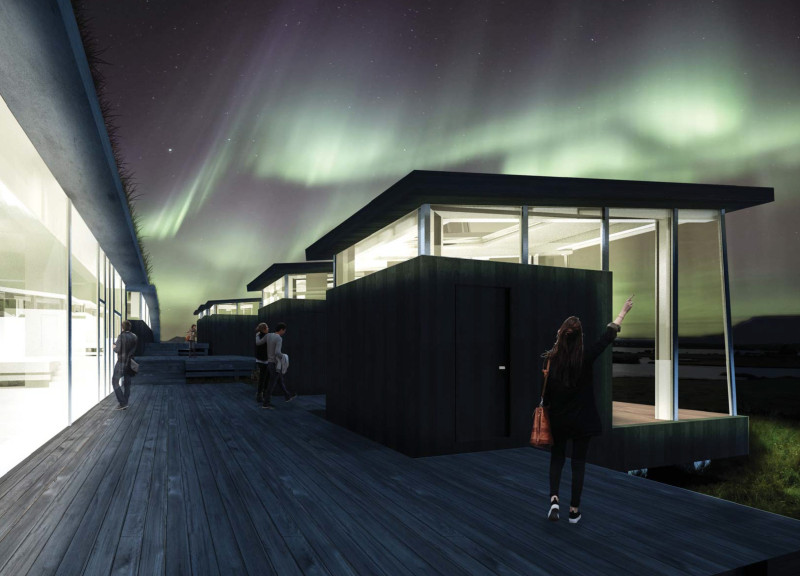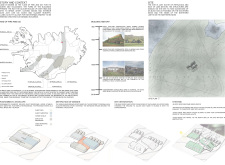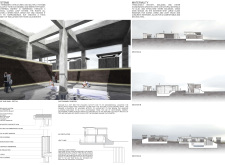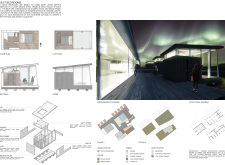5 key facts about this project
The architectural layout features multiple distinct structures that establish a balance between privacy and community interaction. Each unit is strategically placed in relation to natural landmarks, enhancing the occupants' experience of the breathtaking scenery, particularly the mesmerizing auroras that dance across the night sky. This thoughtful positioning not only promotes visual comfort but also emphasizes the integration of the built environment with the natural topography. The project prioritizes user experience, providing an environment where visitors can retreat from daily life while remaining engaged with their surroundings.
Materiality plays a significant role in this architectural endeavor. Concrete is utilized for its stability and thermal mass, which contributes to the energy efficiency of the structures. The selection of wood, particularly darker exteriors and lighter interior finishes, creates a warm, inviting atmosphere, resonating with the natural ambiance of Iceland. Large glass panels are incorporated to allow ample natural light to fill the interiors and provide unobstructed views, effectively blurring the boundaries between outside and inside. A lightweight steel frame supports the structures, ensuring safety and stability while maintaining a modern aesthetic.
One of the unique design approaches employed in "Nature’s Hideout" is its green roof system, which serves multiple functions. This architectural feature not only enhances thermal performance but also reinforces the connection between the buildings and the landscape, as these roofs mirror the undulating hills that surround the site. The design encourages biodiversity, providing habitats for local flora and fauna, which aligns with the project’s sustainable philosophy. Furthermore, the implementation of geothermal energy systems underscores a commitment to renewable resource use, capitalizing on Iceland's geothermal activity for heating and hot water needs.
The guest accommodations are particularly noteworthy, as they are designed as mobile units on wheels. This innovative approach allows for flexibility in site placement and minimizes environmental impact, permitting the structures to adapt as needed without permanent disruption to the land. These units are fitted with solar panels, taking advantage of available sunlight and promoting self-sufficiency in energy consumption. Each space is designed with comfortable living in mind, featuring large windows that frame the beauty of the Nordic environment, thereby enhancing the visitor experience.
Overall, "Nature's Hideout" effectively demonstrates how architecture can function synergistically with nature, encouraging users to engage with and appreciate their surroundings. The design captures the essence of Iceland's rugged landscape while incorporating sustainable practices and modern conveniences. This project is a testament to thoughtful architectural design that respects its environment while serving a clear purpose. For those interested in exploring this project further, reviewing architectural plans, sections, and designs will provide deeper insights into the nuances that shape its distinctive character and functionality. Engage with the architectural ideas presented here to fully appreciate the intricate relationship between design, sustainability, and nature delivered by "Nature’s Hideout."


























